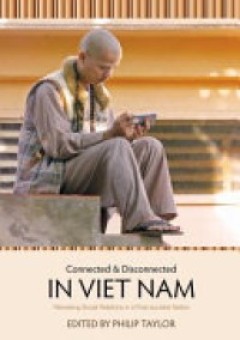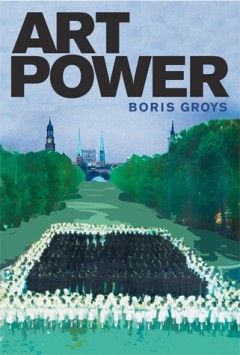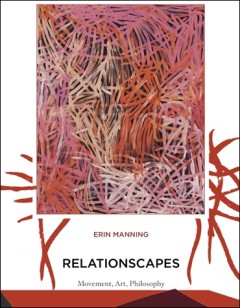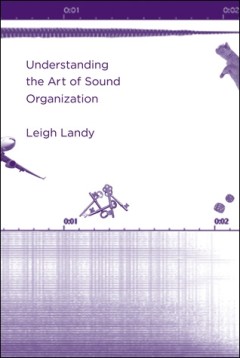Filter by

Software studies :a lexicon
This collection of short expository, critical and speculative texts offers a field guide to the cultural, political, social and aesthetic impact of software. Experts from a range of disciplines each take a key topic in software and the understanding of software, such as algorithms and logical structures.OCLC-licensed vendor bibliographic record.
- Edition
- -
- ISBN/ISSN
- 9780262273343
- Collation
- 1 online resource (xii, 334 pages) :illustrations.
- Series Title
- -
- Call Number
- -

A hole in the head :more tales in the history of neuroscience
Essays on great figures and important issues, advances and blind alleys-from trepanation to the discovery of grandmother cells-in the history of brain sciences.OCLC-licensed vendor bibliographic record.
- Edition
- -
- ISBN/ISSN
- 9780262258852
- Collation
- 1 online resource (x, 356 pages) :illustrations
- Series Title
- -
- Call Number
- -

Entangled :technology and the transformation of performance
"Each chapter in Entangled focuses on a different form: theater scenography, architecture, video and image making, music and sound composition, body-based arts, mechanical and robotic art, and interactive environments constructed for research, festivals, and participatory urban spaces. Salter's exhaustive survey and analysis shows that performance traditions have much to teach other emerging pr…
- Edition
- -
- ISBN/ISSN
- 9780262315104
- Collation
- 1 online resource (xxxix, 460 pages) :illustrations
- Series Title
- -
- Call Number
- -

Noise, water, meat :a history of sound in the arts
Originally published: 1999.An examination of the role of sound in twentieth-century arts.This interdisciplinary history and theory of sound in the arts reads the twentieth century by listening to it--to the emphatic and exceptional sounds of modernism and those on the cusp of postmodernism, recorded sound, noise, silence, the fluid sounds of immersion and dripping, and the meat voices of viruse…
- Edition
- -
- ISBN/ISSN
- 0262276674
- Collation
- 1 online resource (ix, 455 pages)
- Series Title
- -
- Call Number
- -

Requiem for communism
The first survey of the recent requiems for communism by European writers and artists.In Requiem for Communism Charity Scribner examines the politics of memory in postindustrial literature and art. Writers and artists from Europe's second world have responded to the last socialist crisis with works that range from sober description to melancholic fixation. This book is the first survey of this …
- Edition
- -
- ISBN/ISSN
- 9780262283335
- Collation
- 1 online resource (xii, 245 pages) :illustrations
- Series Title
- -
- Call Number
- -

Connected & disconnected in Viet Nam : remaking social relations in a post-…
Vietnam’s shift to a market-based society has brought about profound realignments in its people’s relations with each other. As the nation continues its retreat from the legacies of war and socialism, significant social rifts have emerged that divide citizens by class, region and ethnicity. By drawing on social connections as a traditional resource, Vietnamese are able to accumulate wealth,…
- Edition
- 1
- ISBN/ISSN
- 9781925022926
- Collation
- -
- Series Title
- -
- Call Number
- 959.7044

Art Power
A new book by Boris Groys acknowledges the problem and potential of art's complex relationship to power. Art has its own power in the world, and is as much a force in the power play of global politics today as it once was in the arena of cold war politics. Art, argues the distinguished theoretician Boris Groys, is hardly a powerless commodity subject to the art market's fiats of inclusion an…
- Edition
- -
- ISBN/ISSN
- 9780262274449
- Collation
- -
- Series Title
- -
- Call Number
- -

Art School: (Propositions for the 21st Century)
Leading international artists and art educators consider the challenges of art education in today's dramatically changed art world. The last explosive change in art education came nearly a century ago, when the German Bauhaus was formed. Today, dramatic changes in the art world—its increasing professionalization, the pervasive power of the art market, and fundamental shifts in art-making i…
- Edition
- -
- ISBN/ISSN
- 9780262259040
- Collation
- -
- Series Title
- -
- Call Number
- -

Relationscapes: Movement, Art, Philosophy
A new philosophy of movement that explores the active relation between sensation and thought through the prisms of dance, cinema, art, and new media. With Relationscapes, Erin Manning offers a new philosophy of movement challenging the idea that movement is simple displacement in space, knowable only in terms of the actual. Exploring the relation between sensation and thought through the pri…
- Edition
- -
- ISBN/ISSN
- 9780262255158
- Collation
- -
- Series Title
- -
- Call Number
- -

Understanding the Art of Sound Organization
The first work to propose a comprehensive musicological framework to study sound-based music, a rapidly developing body of work that includes electroacoustic art music, turntable composition, and acoustic and digital sound installations. The art of sound organization, also known as electroacoustic music, uses sounds not available to traditional music making, including prerecorded, synthesize…
- Edition
- -
- ISBN/ISSN
- 9780262277914
- Collation
- -
- Series Title
- -
- Call Number
- -
 Computer Science, Information & General Works
Computer Science, Information & General Works  Philosophy & Psychology
Philosophy & Psychology  Religion
Religion  Social Sciences
Social Sciences  Language
Language  Pure Science
Pure Science  Applied Sciences
Applied Sciences  Art & Recreation
Art & Recreation  Literature
Literature  History & Geography
History & Geography